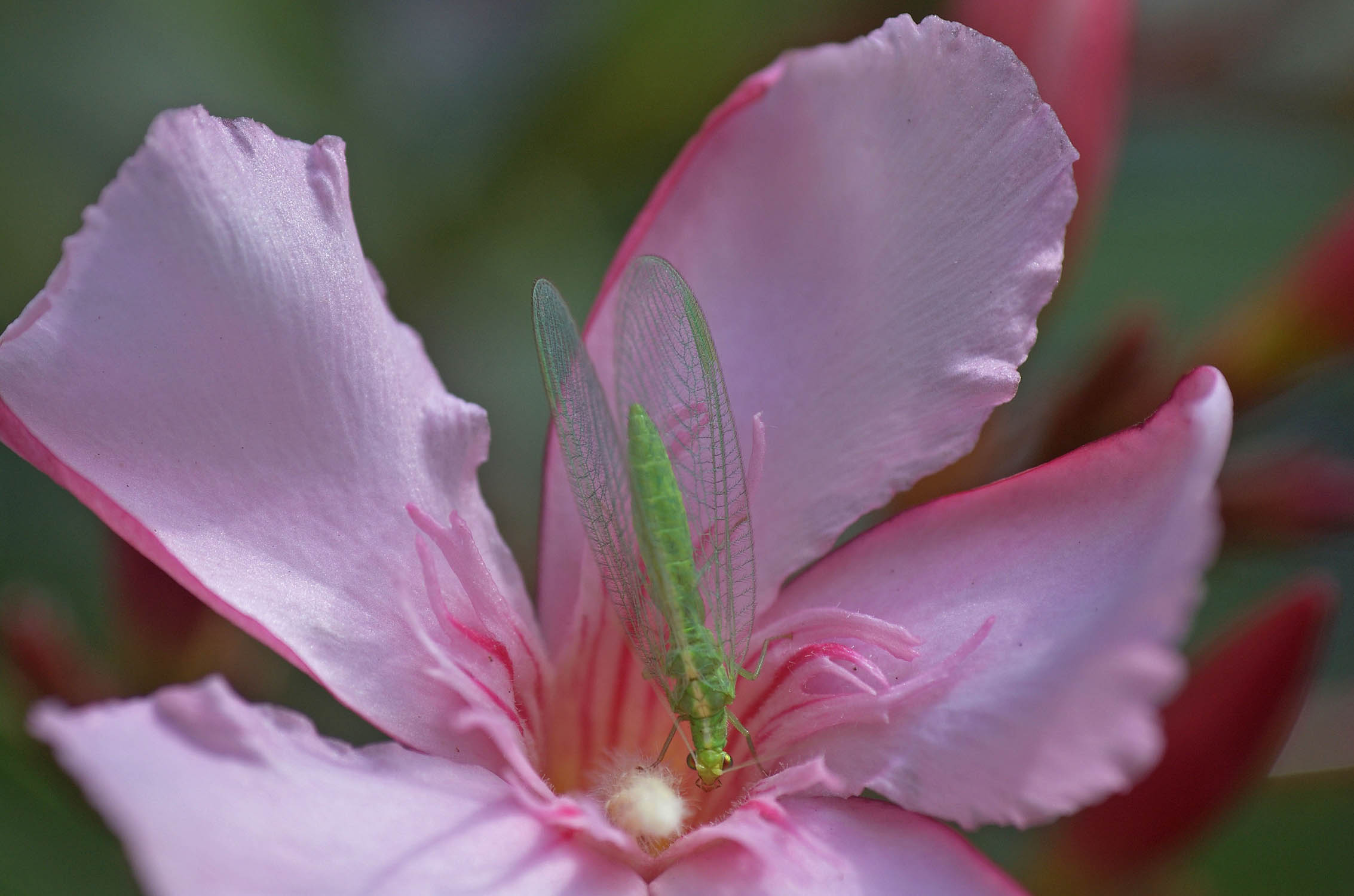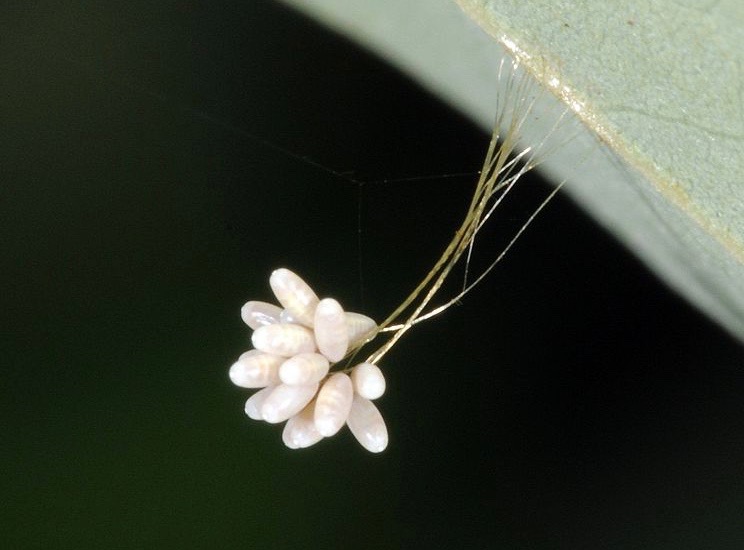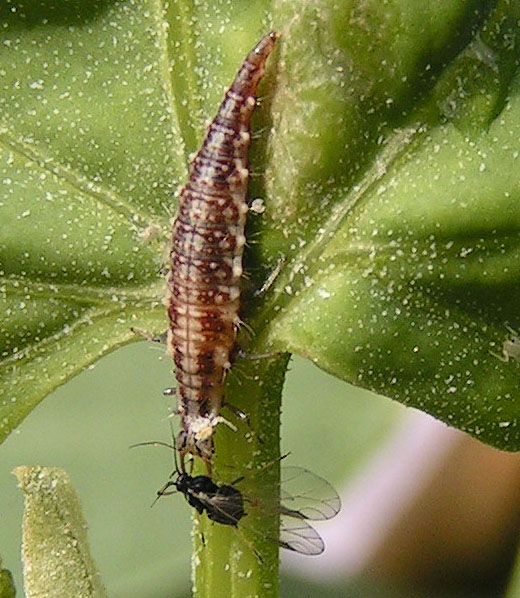
Lacewings
Beneficial

There are over 6000 species of lacewing, and they come from an ancient lineage of insects that have been on the planet for a very long time. They are usually green in colour with slender bodies, large eyes, and delicate looking, intricately veined wings. Don't let their fragile appearance fool you; for being a rather small insect, lacewings are actually ferocious predators that spend most of their day either devouring small insects or looking for their next meal. Aphids are their favourite, but any small, soft-bodied insect will do.
Gardeners often find these voracious little beasts on the undersides of leaves or creeping up the stems of their perennials. They are very efficient at their job, and they themselves are important prey for songbirds, frogs, and other insects. Lacewings have a tendency to be more common in gardens where moisture is available; a pond or a stream is a good way to get their attention but a birdbath will also work. These pretty insects are definitely the gardener's friend and can sometimes be seen wearing tiny vests that say "pest control crew". (Just kidding.) Seriously though, if you find these hardworking and beneficial insects in your garden, leave them to do their work and maybe see if you can get a good photo of them; they are remarkably lovely when viewed up close.
Lacewing egg nests tend to puzzle gardeners when they first encounter them. They are tiny white egg-looking eggs that are suspended by a fine filament. Sometimes they are found in clusters and sometimes in neat little rows. If you see little white eggs that appear to float over your plant's leaves, don't harm them!
While the adult form of the lacewing is quite lovely, the larvae are less so. Just like ladybugs, it's the larvae that do most of the predation of the unwanted insects in your garden so if you see one of these in your yard, please thank it for its help keeping your yard pests under control.


